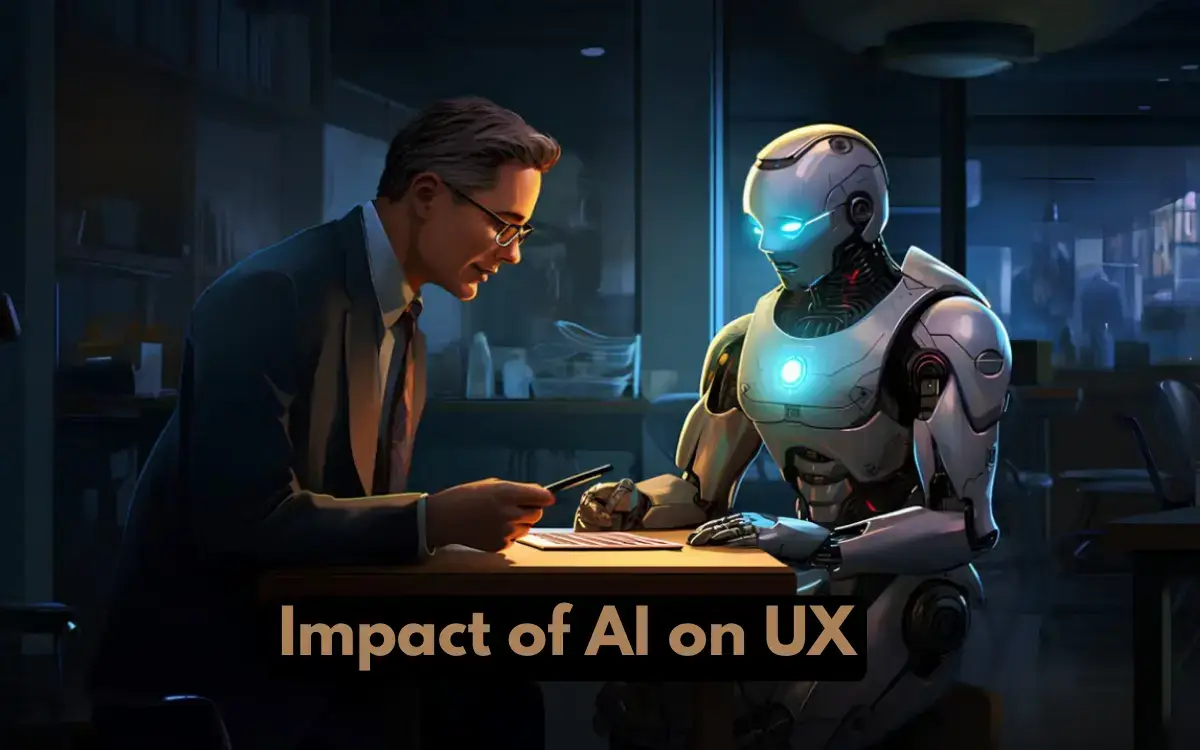How will the rise of artificial intelligence impact the work of UX designers? This is a question that many in the design industry are pondering.
AI is becoming increasingly integrated into our daily lives, from personalized recommendations to voice assistants.
This offers opportunities as well as obstacles for UX designers. The role of the designer may shift as AI takes on more tasks traditionally done by humans.
However, the need for a human touch in creating intuitive and engaging user experiences remains paramount.
As we navigate this new era, UX designers will play a crucial role in shaping how we interact with AI tools and technologies in 2024.
How Will AI Impact on UX Designers in 2024?
In 2024, AI is not replacing UX designers, but it’s definitely having a big impact on how they work and what they do. Here are some key ways:
Augmentation, not replacement:
- Automation of repetitive tasks: AI can take on tedious tasks like A/B testing, accessibility audits, and UI element generation, freeing up designers’ time for more strategic work.
- Enhanced design process: AI-powered tools can suggest design options, predict user behavior, and personalize experiences based on user data. This helps designers make data-driven decisions and iterate faster.
- New creative possibilities: AI can generate novel design concepts and prototypes, pushing the boundaries of what’s possible and sparking innovation.
Shifting skillsets:
- Understanding and using AI tools: Designers will need to learn how to use AI tools effectively, interpret their outputs, and understand their limitations.
- Focus on empathy and critical thinking: While AI handles some tasks, the human touch remains crucial. Designers will need to focus on understanding user needs, emotions, and ethical considerations, ensuring AI complements rather than replaces human creativity.
- Communication and collaboration: With AI in the mix, designers will need to collaborate effectively with data scientists, engineers, and other stakeholders to ensure a seamless user experience.
Emerging trends:
- Hyper-personalization: AI will enable highly personalized experiences that adapt to individual user preferences, context, and real-time needs.
- Accessible design: AI can help make designs more accessible by identifying and addressing potential barriers for users with disabilities.
- Conversational interfaces: AI-powered chatbots and voice assistants will become more common, requiring designers to create intuitive and engaging conversational experiences.
✅ The 11 Best AI Graphic Designing Tools in 2024 ✅
Challenges and Considerations for UX Designers
UX Designers face a variety of challenges in their work. Here are some of the major ones:
- UX is often undervalued within an organization: It’s not uncommon for the importance of UX work to be overlooked or misunderstood by other members of an organization, including those in leadership roles. This can lead to a feeling of frustration when valuable insights and recommendations are disregarded. The key to overcoming this challenge is for the UX leader or manager to advocate for the value of UX.
- Balancing aesthetics, functionality, and accessibility: One of the main challenges in UX design is finding the right balance between creating a design that is visually appealing, functional, and accessible to all users.
- The ambiguity of UX design: At the beginning of a UX project, it can be unclear where to start or what direction to take. This ambiguity stems from a combination of uncertainty and complexity. Embracing this ambiguity as an inherent part of UX design is crucial to overcoming this challenge.
These challenges present unique opportunities in the evolving field of UX design. By addressing these challenges, UX designers can create designs that are not only visually pleasing but also cater to the diverse needs of users.
How UX Designers Can Overcome With AI in 2024?
- Learn the fundamentals: UX design ideas, techniques, and procedures should be understood by UX designers. They ought to concentrate on cutting-edge technologies and be receptive to new ideas.
- Keep on learning: UX designers ought to never stop learning. They can read books, blogs, and vlogs in addition to enrolling in classes and reading books.
- Develop your skills: UX designers should hone their commercial acumen, cross-team collaboration, and artificial intelligence (AI) abilities. Along with learning the fundamentals of coding, they should also master wireframing, user flows, mockups, and prototyping.
- Practice Everyday: Through real-world or academic projects, mentorship, and internships, UX designers can gain experience.
Accept new technology. - Welcome the latest technology: In 2024, augmented reality (AR) and virtual reality (VR) should be embraced by UX designers. They ought to be open to new technologies and continue to lead the way in integrating AI.
- Build a community of professionals: UX designers ought to have a strong foundation in the field and keep up a tidy portfolio. They should also work on their teamwork and communication abilities.
✅ The 11 Best AI Graphic Designing Tools in 2024 ✅
Conclusion
In conclusion, AI is transforming the UX design landscape in 2024. It’s not about replacing designers, but enhancing their capabilities to deliver more personalized, intuitive, and dynamic user experiences.
AI tools automate mundane tasks, allowing designers to concentrate on the creative aspects. Predictive analytics help designers understand user behavior better and design proactively. However, the human touch is irreplaceable.
The empathy, understanding, and creativity of designers are crucial in crafting experiences that resonate with users.
While AI is a potent tool, the future of UX design still hinges on the unique human ability to understand and connect with other humans. It’s a symbiotic relationship where AI and UX designers augment each other’s capabilities.
